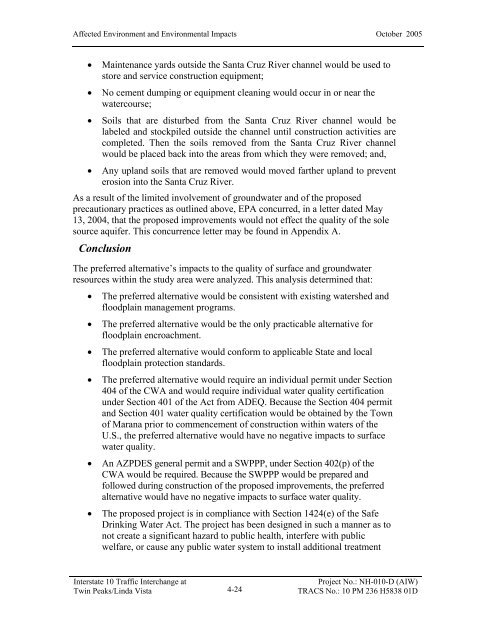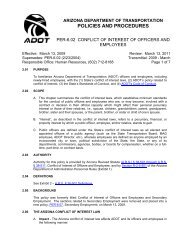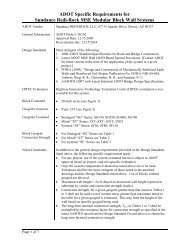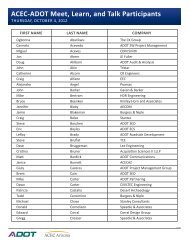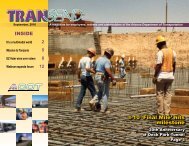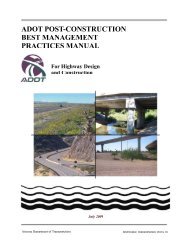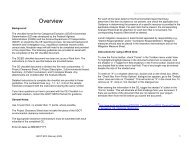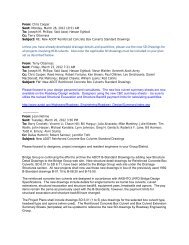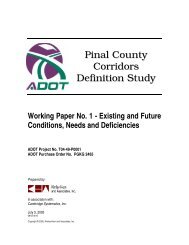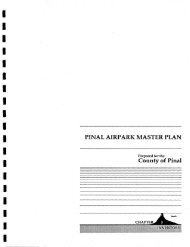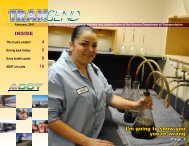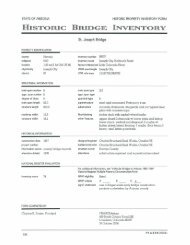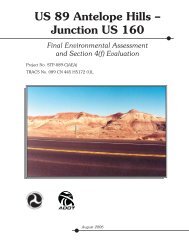I-10 Twin Peaks Traffic Interchange, Environmental Assessment
I-10 Twin Peaks Traffic Interchange, Environmental Assessment
I-10 Twin Peaks Traffic Interchange, Environmental Assessment
Create successful ePaper yourself
Turn your PDF publications into a flip-book with our unique Google optimized e-Paper software.
Affected Environment and <strong>Environmental</strong> Impacts October 2005<br />
• Maintenance yards outside the Santa Cruz River channel would be used to<br />
store and service construction equipment;<br />
• No cement dumping or equipment cleaning would occur in or near the<br />
watercourse;<br />
• Soils that are disturbed from the Santa Cruz River channel would be<br />
labeled and stockpiled outside the channel until construction activities are<br />
completed. Then the soils removed from the Santa Cruz River channel<br />
would be placed back into the areas from which they were removed; and,<br />
• Any upland soils that are removed would moved farther upland to prevent<br />
erosion into the Santa Cruz River.<br />
As a result of the limited involvement of groundwater and of the proposed<br />
precautionary practices as outlined above, EPA concurred, in a letter dated May<br />
13, 2004, that the proposed improvements would not effect the quality of the sole<br />
source aquifer. This concurrence letter may be found in Appendix A.<br />
Conclusion<br />
The preferred alternative’s impacts to the quality of surface and groundwater<br />
resources within the study area were analyzed. This analysis determined that:<br />
• The preferred alternative would be consistent with existing watershed and<br />
floodplain management programs.<br />
• The preferred alternative would be the only practicable alternative for<br />
floodplain encroachment.<br />
• The preferred alternative would conform to applicable State and local<br />
floodplain protection standards.<br />
• The preferred alternative would require an individual permit under Section<br />
404 of the CWA and would require individual water quality certification<br />
under Section 401 of the Act from ADEQ. Because the Section 404 permit<br />
and Section 401 water quality certification would be obtained by the Town<br />
of Marana prior to commencement of construction within waters of the<br />
U.S., the preferred alternative would have no negative impacts to surface<br />
water quality.<br />
• An AZPDES general permit and a SWPPP, under Section 402(p) of the<br />
CWA would be required. Because the SWPPP would be prepared and<br />
followed during construction of the proposed improvements, the preferred<br />
alternative would have no negative impacts to surface water quality.<br />
• The proposed project is in compliance with Section 1424(e) of the Safe<br />
Drinking Water Act. The project has been designed in such a manner as to<br />
not create a significant hazard to public health, interfere with public<br />
welfare, or cause any public water system to install additional treatment<br />
Interstate <strong>10</strong> <strong>Traffic</strong> <strong>Interchange</strong> at<br />
<strong>Twin</strong> <strong>Peaks</strong>/Linda Vista<br />
4-24<br />
Project No.: NH-0<strong>10</strong>-D (AIW)<br />
TRACS No.: <strong>10</strong> PM 236 H5838 01D


